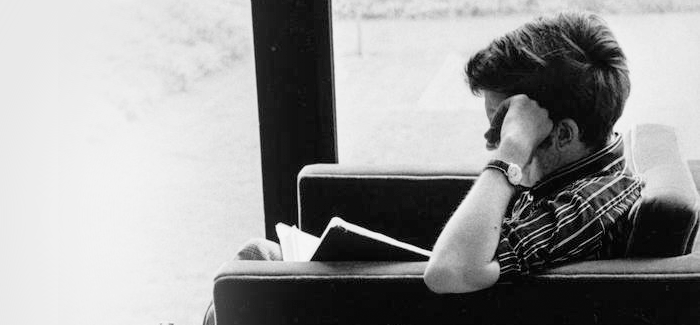
(University of Chicago Photographic Archives, apf2-06232, Special Collections Research Center, University of Chicago Library)
How well do you keep up with the page-turning pace?
Speed-readers scan text at about 1,500 words per minute (wpm), but high-performing college students read at 450 wpm. We’re sure that first-years getting an initial taste of the humanities and social sciences Core are asking, “How do I make that jump?” The key is to not read along silently in your head, according to the Student Counseling Services’ web pages on speed-reading, which offer this and other tips for improving your reading clip. Of course, there’s no such thing as free speed-reading—the trade-off can mean decreased comprehension or enjoyment, especially for certain kinds of books. Speed-reading is best when used for dense contemporary humanities texts, but not, the website advises, for math, physics, or 19th-century philosophy. See the chart below for a breakdown of how long it would take to read (or reread) some well-known books at a rate of 450 wpm.
A Dance to the Music of Time by Anthony Powell ~1,000,000 words: 37 hours, 2 minutes
Infinite Jest by David Foster Wallace 543,709 words: 20 hours, 8 minutes
Ulysses by James Joyce 265,000 words: 9 hours, 47 minutes
Moby-Dick by Herman Melville 209,117 words: 7 hours, 45 minutes
Walden by Henry David Thoreau 114,634 words: 4 hours, 15 minutes
Persuasion by Jane Austen 87,978 words: 3 hours, 16 minutes
Portnoy’s Complaint by Philip Roth, AM’55 78,535 words: 2 hours, 55 minutes
The Picture of Dorian Grayby Oscar Wilde 78,462 words: 2 hours, 54 minutes
The Adventures of Tom Sawyer by Mark Twain 70,570 words: 2 hours, 37 minutes
Cat’s Cradle by Kurt Vonnegut, AM’71 52,359 words: 1 hours, 56 minutes
Freakonomics by Steven Levitt & Stephen Dubner 50,436 words: 1 hours, 52 minutes
Fahrenheit 451 by Ray Bradbury 46,118 words: 1 hours, 43 minutes
Animal Farm by George Orwell 29,966 words: 1 hours, 7 minutes
